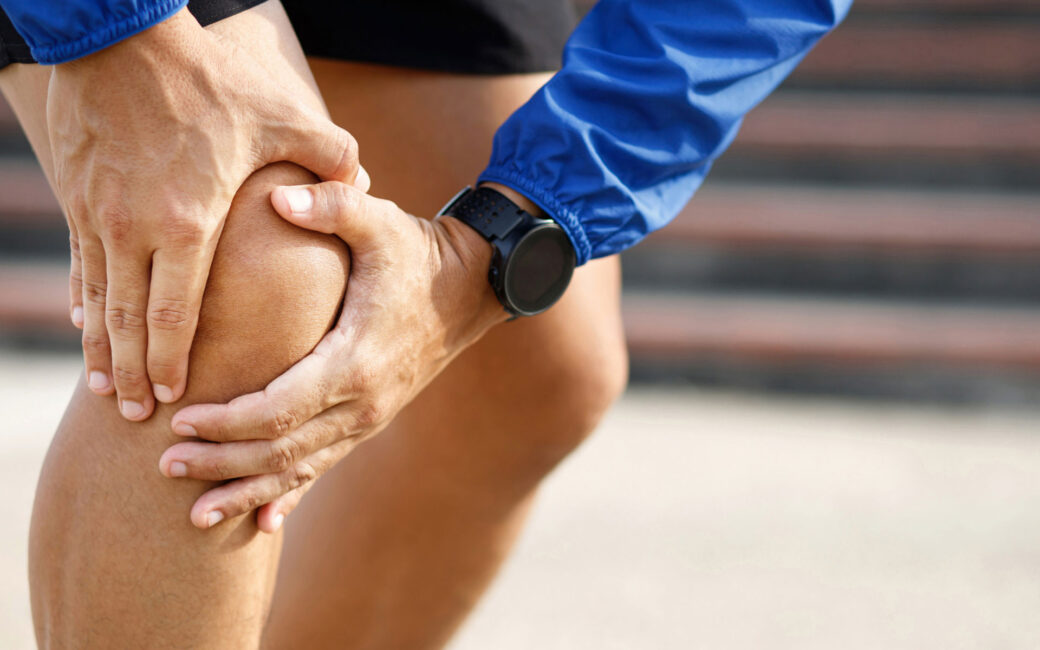Tips on avoiding joint pain during exercise
Experiencing joint pain during exercise is not inevitable. Here are some tips on how to keep your joints moving, loose, fluid and pain-free.
Aug 15, 2021 | Carter Bushway, CPT, CSCS

The joints in your body are made up of muscle, cartilage and ligaments that connect your bones together and allow for all the movement your body needs to perform throughout the day. On an average day, these movements go on without a hitch. However, there are days where you can feel every move you make, and those joints feel like they need a whole quart of oil to function properly. Let’s take a quick dive into how and why those days happen, and what you can do to help prevent and manage those symptoms.
Joint pain can be a result of a few primary causes:
1.Arthritis – Swelling, pain, decreased range of motion and stiffness in the joints are the most common symptoms associated with arthritis. There are over 100 different types of arthritis and over 22.7 million people in the United States are affected by one of them (via the International Association for the Study of Pain, 2016).
2.Injury – Whether it is muscular, skeletal or ligamentous, any damage of the tissues surrounding the joint can cause pain.
3.Being overweight – Having extra weight for your body to carry around can result in an increased amount of strain and stress on the body and a significant amount of pain.
These primary causes can affect a lot of us via genetic predisposition, in which we have little to no control over. However, what we can control is how we manage this joint pain and protect ourselves from making it worse or getting the symptoms altogether. Often, we look towards the complete stoppage of activity to alleviate pain, but in recent years studies have shown that exercise can provide a great benefit to those experiencing joint pain by keeping the joints moving, loose and fluid.
Before you get started with any sort of planned exercise, make sure that you warm up properly. A 5–10-minute warm up routine will be crucial to not only your performance during the workout, but also your joint’s ability to perform all the movements you have ahead of you. This warmup should consist of lighter exercises that are a mini version of what you’ll be doing in the main part of your workout. For example, if you’re doing a strength routine for the day and have weighted squats planned, add in some bodyweight squats and a wall sit to help get those quads firing and put your hip, knee, and ankle joints in the right position. Sprinkle in 5 minutes of light conditioning to get your heart rate up (stationary bike is a great option to keep impact on the joints low) and you and your joints will be prepared for your workout!
Exercise selection is tricky for anyone, especially when given restrictions and having to think of workarounds for your joint pain. A lot of the time we tend to eliminate the more traditional exercises such as squats, hip hinging and planks and try to seek out the perfect exercise that gives us what we want without any sort of pain. But most traditional exercises can be modified to fit those needs and still protect those joints. Putting a wedge under your heels to help with ankle mobility during squats can help you put more emphasis on driving through your heels, which will result in less pressure on your knees. A half foam roller under your hands can help make your wrists more comfortable during push ups or plank variations. If you need help with modifying the exercises you want to do, consult a personal trainer or physical therapist for your exercise selection.
What is just as important as before and during exercise is what you do after, and this is where a few major steps can be taken to help improve your joint health. Don’t take your cooldown from your workout for granted, and always stretch to end the workout. It is a great way to steadily decrease your heart rate and decrease tension in your muscles post-workout, which will in turn increase overall joint range of motion. During that stretching, try to incorporate foam rolling into your cooldown routine. Foam rolling targets not only muscles, but fascia, which is the connective tissue that surrounds muscles and joints to keep them in place. Tightness of fascia in certain areas can results in restrictions and pain within the associated joints.
While all these adjustments you can make during your workouts will help with your joint pain, making that extra effort and taking care of your body between exercise sessions is just as important. Many times, we tend to isolate our activities and forget that everything we do effects everything we do. Improving on our recovery, nutrition and sleep will provide just as many positive benefits to our joint health as reshaping the way we exercise. Using a hot pack or sauna in between workouts will increase blood flow and loosen up tight muscles. Following an anti-inflammatory diet can improve your body’s healing response and reduce that chronic joint inflammation and pain. Getting those eight hours of sleep will allow your body to physiologically recover from that workout and be ready for the next day ahead. All these little things outside of the exercise can help improve our body’s response to the exercise and decrease the overall pain and discomfort many of us experience.
Joint pain can be inhibiting and frustrating for anyone who experiences it. We feel like we can’t do things that we used to be able to do, and that we must flip our lives upside down to meet the new expectations of our body. But there are some things that we can do to help maintain control, and keep doing the things we love to do, for as long as we love to do them. If you’re looking to do just that, start a conversation with your friendly neighborhood health professional, and we’ll get you on the right track!

Carter Bushway
Carter Bushway, CPT, CSCS, has a passion for sport-specific training, plyometrics and explosive movements, and is studying to become a Certified Strength and Conditioning Specialist.
